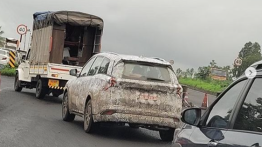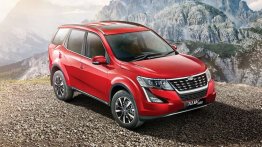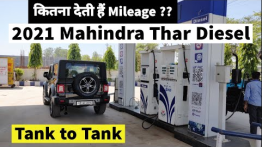The Mahindra Marazzo, which went on sale on 3 September 2018, has become the first-ever made-in-India MPV or multi-purpose vehicle to get a 4-star crash safety rating from Global NCAP.
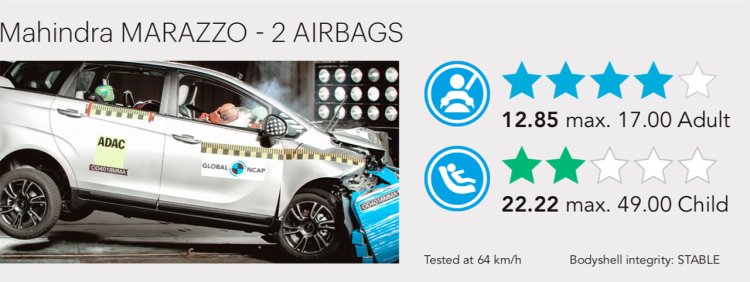
Global NCAP has given the Marazzo a score of 12.85 out of 17.00 in adult occupant safety and 22.22 out of 49 in child occupant safety. This equates to 4-star and 2-star safety rating in adult occupant safety and child occupant safety respectively.
The crash testing was done at a speed of 64 km/h. The bodyshell was rated as stable, and it was capable of withstanding further loadings. As per the agency, the protection offered to the driver and passenger’s head, that to the neck is good. On the other hand, the driver's chest receive only marginal protection while the passenger's chest has adequate protection. The knees of both the front occupants remain protected.
The agency installed a forward-facing child seat for a 3-year old with ISOFIX and top tether. It experienced excessive forward movement during the impact, which left the head vulnerable. Sufficient protection was offered to the chest. The 18-month-old CRS (child restraint system) was installed with ISOFIX in a rearward facing position. The recommended CRS did not show incompatibility.
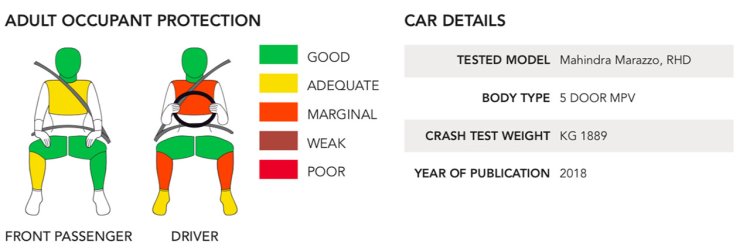
Also Read: Feature-laden Mahindra Scorpio S9 launched at INR 13.99 lakh
Speaking on the crash test performance of the Tata Nexon and the Mahindra Marazzo, David Ward, Global NCAP Secretary-General said-
This is a huge landmark for car safety in India. Congratulations to Tata Motors for achieving India’s first five star rating for adult occupant protection. Congratulations also to Mahindra for their first four star result. The Nexon was engineered in India and this shows the huge capability of the domestic industry to achieve excellence in safety design and performance. With the Nexon, Tata have shown the global car industry that to achieve five stars you can ‘Make in India’. Global NCAP is looking forward to many more Indian five star cars and further improvements in both pedestrian protection and crash avoidance.











